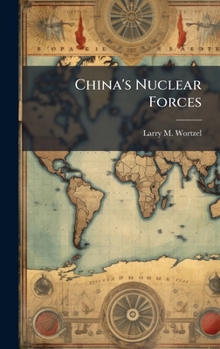China's Nuclear Forces
Recent books and journal articles published in China provide new insights into nuclear doctrine, operations, training, and the employment of the People's Liberation Army's (PLA) strategic rocket forces. The major insights come from exploiting sections of a doctrinal text published for PLA institutions of higher military education by the Chinese National Defense University, A Guide to the Study of Campaign Theory (Zhanyi Lilun Xuexi Zhinan). In the view of many in the PLA, the military power of the United States, the potential to use that power to coerce or dominate China, and the ability to threaten China's pursuit of its own its interests, presents a latent threat to China. Additionally, China's own threats against democratic Taiwan, and the fact that PLA leaders believe that the United States is likely to come to Taiwan's assistance in the event of Chinese aggression in the Taiwan Strait, magnifies the threat that PLA officers perceive from the United States. This perceived threat drives the PLA to follow U.S. military developments more carefully than those of other nations and to be prepared to counter American forces. The PLA is mixing nuclear and conventional missile forces in its military doctrine. Also, some in China are questioning whether the doctrine of "no-first-use" of nuclear weapons serves China's deterrent needs.
This work has been selected by scholars as being culturally important, and is part of the knowledge base of civilization as we know it. This work was reproduced from the original artifact, and remains as true to the original work as possible. Therefore, you will see the original copyright references, library stamps (as most of these works have been housed in our most important libraries around the world), and other notations in the work.
This work is in the public domain in the United States of America, and possibly other nations. Within the United States, you may freely copy and distribute this work, as no entity (individual or corporate) has a copyright on the body of the work.
As a reproduction of a historical artifact, this work may contain missing or blurred pages, poor pictures, errant marks, etc. Scholars believe, and we concur, that this work is important enough to be preserved, reproduced, and made generally available to the public. We appreciate your support of the preservation process, and thank you for being an important part of keeping this knowledge alive and relevant.





